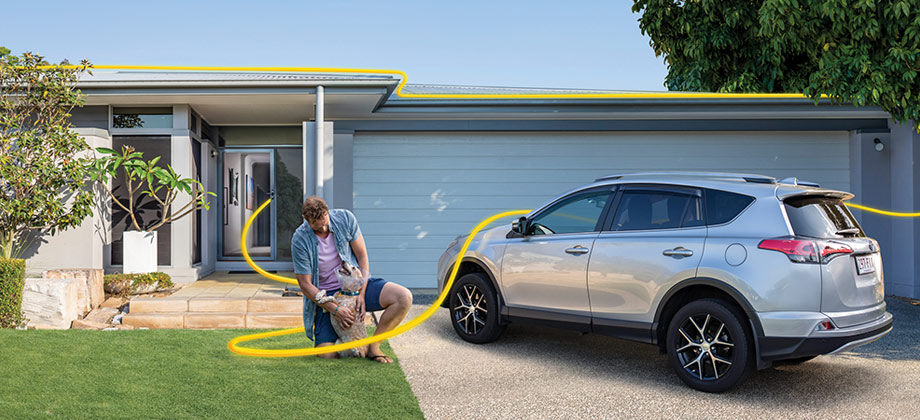How to tow other cars
Towing with a rope
Towing a car with a tow-rope is legal, subject to complying with the relevant road rules and regulations, but it’s not something we generally recommend.
Exceptions might be moving vehicles a very short distance at low speed, either for safety reasons or where restricted access (such as some car-parks) means other towing options can’t be easily employed.
Depending on vehicle design, the nature of the breakdown, serious vehicle damage could result from this type of towing. Many vehicles these days will require tilt-tray towing.
There are also significant safety risks. This could include a lack of power assistance to steering and brakes on the towed vehicle.
Queensland Road rules specify:
- The towed vehicle’s brakes and steering must be in working order
- The vehicle can only be towed if safe to do so.
- Lighting requirements
- Distances between vehicles
- The use of warning flags/lights on tow lines.
- Towing mass limits, and
- Driver requirements
See Queensland's Transport Operations Road Use Management - Road Rules, Sections 216, 294 and 295 for further information.
Towing with an ‘A’ frame
Towing a vehicle with an ‘A’ frame is generally restricted to specialist applications, for example towing a small SUV behind a motor home.
This form of towing involves the towed vehicle having all its wheels on the road and being connected to the tow vehicle’s tow bar by a triangular shaped metal drawbar.
While this form of towing may seem attractive, there is a comprehensive set of technical requirements"A" frame towing guide (PDF, 244 KB) that must be complied with.
These rules relate specifically to Queensland vehicles. There may be variations in other states so you should check the relevant legislation in the state or territory in which you are operating.
Not all vehicles can be towed in this manner.
Some vehicles, due to their design, risk extensive driveline damage so it’s important to always consult the manufacturer about its suitability for the application.
Towing rules
The following are a few pertinent points from Queensland’s Transport Operations (Road Use Management—Road Rules) Regulation 2009.
A driver must not tow a vehicle at night, or in hazardous weather conditions causing reduced visibility, unless—
(i) the tail lights of the vehicle are operating effectively and are clearly visible; or
(ii) the vehicle has portable rear lights that are operating
The driver of a motor vehicle must not tow another motor vehicle unless—
(a) either—
(i) the driver can control the movement of the towed vehicle; or
(ii) the brakes and steering of the towed vehicle are in working order and a person who is licensed to drive the towed vehicle is sitting in the driver’s seat of the towed vehicle, and is in control of its brakes and steering; and
(b) it is safe to tow the vehicle.
The driver of a motor vehicle towing another vehicle using a chain, rope, fabric, strap or wire (the towline) must;
If neither of the vehicles is a motorbike, keep a distance of not over 4m between the vehicles.
If at least 1 of the vehicles is a motorbike, keep a distance of not over 2.5m between the vehicles.
If the towline is longer than 2m, attach a white or brightly coloured flag, piece of cloth or other similar material (the warning material) to the towline
The warning material must—
(a) be substantially square or rectangular with 2 adjacent sides at least 300mm long; and
(b) be attached midway along the towline; and
(c) be visible for at least 100m from either side of the warning material.
If the driver is towing at night, the driver must ensure the warning material is lit by a light attached to 1 of the vehicles.
Things to note
The information in this article has been prepared for general information purposes only and is not intended as legal advice or specific advice to any particular person. Any advice contained in the document is general advice, not intended as legal advice or professional advice and does not take into account any person’s particular circumstances. Before acting on anything based on this advice you should consider its appropriateness to you, having regard to your objectives and needs.

